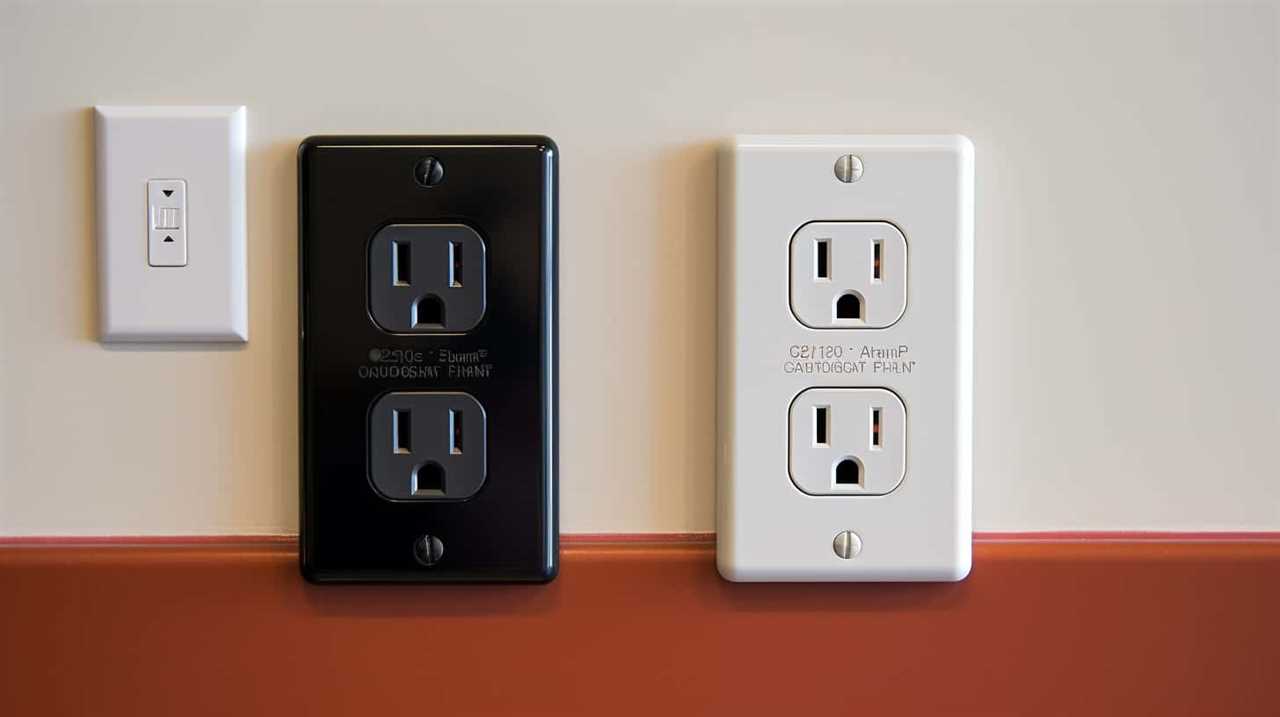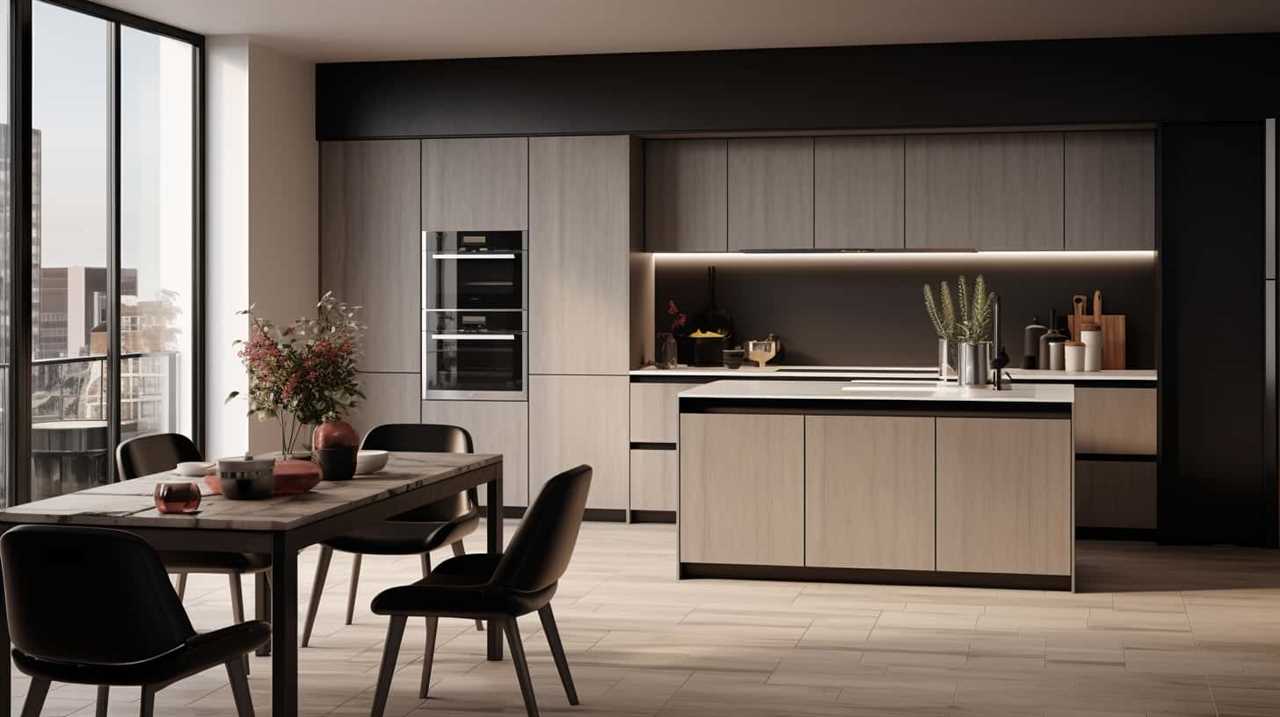In today’s modern world, households are equipped with appliances that enhance our daily lives, but many homeowners may not be aware that these devices consume energy even when not in use, known as standby power.
This hidden energy usage, also referred to as vampire energy, can have a significant impact on both the environment and our energy bills. Understanding which appliances are the common culprits and implementing smart strategies to minimize standby power consumption can help us take control of our energy usage.
In this guide, we will explore the concept of standby power, its hidden costs, and provide practical tips to reduce energy waste when appliances are not in use.
Key Takeaways
- Standby power consumption, also known as vampire energy, occurs when electronic devices are not actively in use.
- Unplugging devices when not in use or using smart power strips with switches can help minimize standby power consumption.
- Investing in energy-efficient appliances and devices can significantly reduce overall energy consumption, including phantom power.
- Promoting energy efficiency and implementing effective energy-saving techniques can mitigate the hidden costs of standby power and reduce environmental impact.
Standby Power: What Is It
Standby power, also known as vampire power, refers to the electricity consumed by electronic devices when they are turned off or in standby mode. Many people are unaware that even when devices are not actively being used, they continue to draw power from the electrical grid. This standby power consumption has become a significant concern due to its impact on energy efficiency and the environment.

To combat this issue, smart power strips have been introduced. These power strips are designed to cut off power supply to devices when they are not in use, effectively reducing standby power consumption. By utilizing advanced technologies such as timers and occupancy sensors, smart power strips can automatically detect when devices are not in use and disconnect power accordingly.
There are several myths surrounding standby power, such as the belief that turning off devices completely eliminates standby power consumption. However, this is not entirely true, as certain devices still draw a small amount of power even when switched off. Understanding vampire energy and its effects on energy consumption is crucial in making informed decisions and implementing effective energy-saving strategies.
In the following section, we will delve deeper into the concept of vampire energy and explore ways to minimize its impact.
Understanding Vampire Energy
Understanding vampire energy is crucial for energy efficiency and cost savings.

One aspect to consider is the availability of energy-saving standby modes in appliances, which reduce phantom power consumption.
Phantom power consumption occurs when appliances consume electricity even when they are not in use, leading to unnecessary energy waste.
Energy-Saving Standby Modes
Appliances can be set to operate in energy-saving standby modes, which minimize power consumption when they are not in use, thereby reducing the impact of vampire energy.
These energy-saving standby modes aim to tackle the issue of standby power waste, where appliances continue to draw power even when they are not actively being used. By entering a low-power mode, appliances consume significantly less electricity, leading to reduced energy consumption and lower electricity bills.

Energy-saving standby modes typically involve features such as automatic power-off timers, sleep modes, and power management systems. These modes ensure that appliances are ready to be used immediately while still conserving energy.
Additionally, some appliances have smart features that can be programmed to automatically enter standby modes during specific times of the day or when not in use for a certain period.
Ultimately, energy-saving standby modes play a crucial role in minimizing standby power waste and promoting energy efficiency in households and industries.
Phantom Power Consumption
Phantom power consumption, also known as vampire energy, is a significant contributor to wasted electricity in households and industries. This phenomenon refers to the energy consumed by electronic devices even when they are not actively in use. Understanding the impact of phantom power on the environment is crucial for implementing effective energy-saving techniques. Here are three key points to consider:

- Unplugging devices: Simply turning off appliances may not be enough to eliminate phantom power consumption. Unplugging devices when not in use can completely cut off the standby power and reduce energy wastage.
- Power strips with switches: Using power strips with switches allows for easy control of multiple devices. By turning off the power strip when not in use, phantom power consumption can be prevented.
- Energy-efficient devices: Investing in energy-efficient appliances can significantly reduce overall energy consumption, including phantom power. Look for devices with energy-saving features and certifications to minimize environmental impact.
Understanding phantom power consumption and implementing effective energy-saving techniques can help reduce the environmental impact and optimize energy usage.
Transitioning into the subsequent section about the hidden costs of standby power, let’s explore the financial implications of this wasteful behavior.
The Hidden Costs of Standby Power
Standby power, also known as vampire power or phantom load, refers to the electricity consumed by electronic devices while they are in standby mode or turned off but still plugged in. This hidden cost of standby power can account for a significant amount of energy waste and contribute to higher electricity bills.
Understanding energy vampires and taking measures to reduce standby power waste, such as unplugging devices when not in use or using smart power strips, can help mitigate these hidden costs and promote energy efficiency.
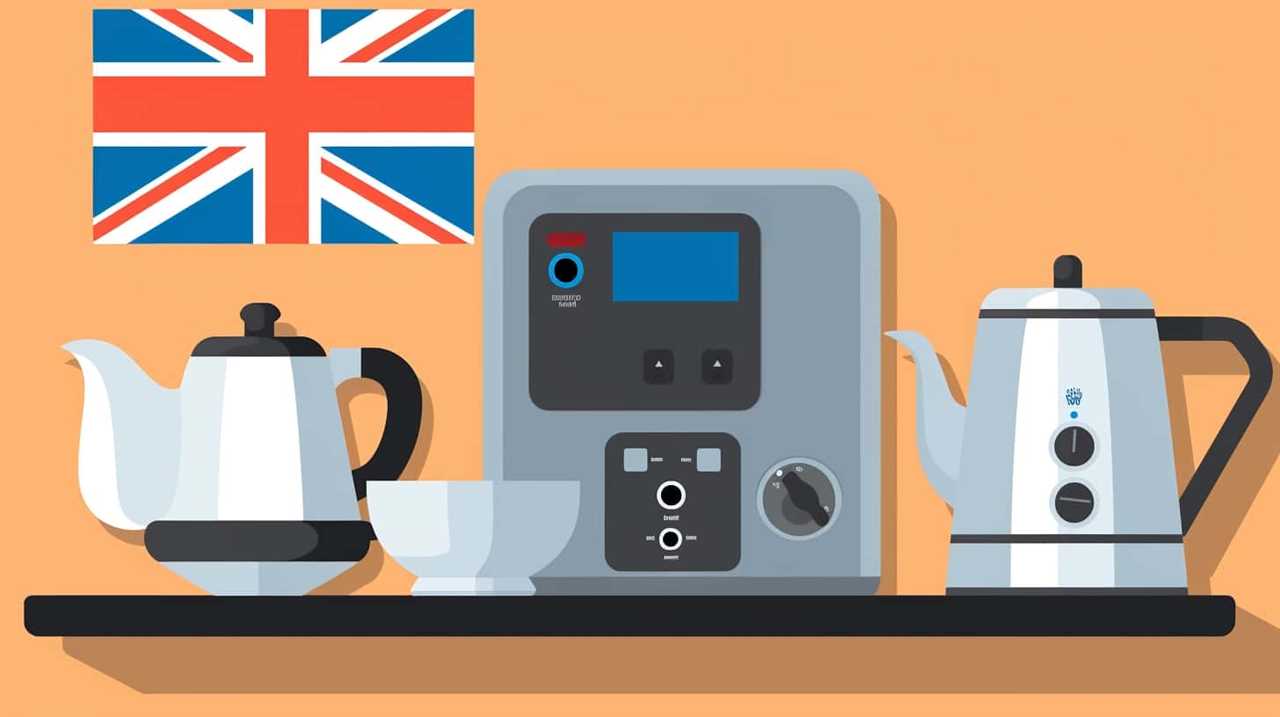
Energy Vampires Explained
Energy consumption from idle electronics can be a significant drain on resources and finances. Many people are unaware of the electricity consumed by devices when they are not in use, leading to the perpetuation of vampire energy myths. To shed light on this issue, here are three important points to consider:
- Standby power is not negligible: Contrary to popular belief, electronic devices continue to draw power even when they are on standby. This hidden cost of standby power can account for a significant portion of household energy consumption.
- Cumulative impact on the environment: The collective energy wasted by idle electronics has a detrimental impact on the environment. It contributes to increased carbon emissions and exacerbates the effects of climate change.
- Financial implications: The hidden costs of standby power can result in higher electricity bills, adding unnecessary expenses to households and businesses.
Understanding the concept of energy vampires and the hidden costs of standby power is crucial for making informed decisions about reducing standby power waste. Now, let’s explore effective strategies for minimizing energy consumption from idle electronics.
Reducing Standby Power Waste
One effective way to address the hidden costs of standby power waste is by implementing strategies to reduce energy consumption from idle electronics.
Standby power, also known as vampire power, refers to the energy consumed by electronic devices even when they are not in use. This wasted energy can account for a significant portion of electricity bills and contribute to unnecessary carbon emissions.
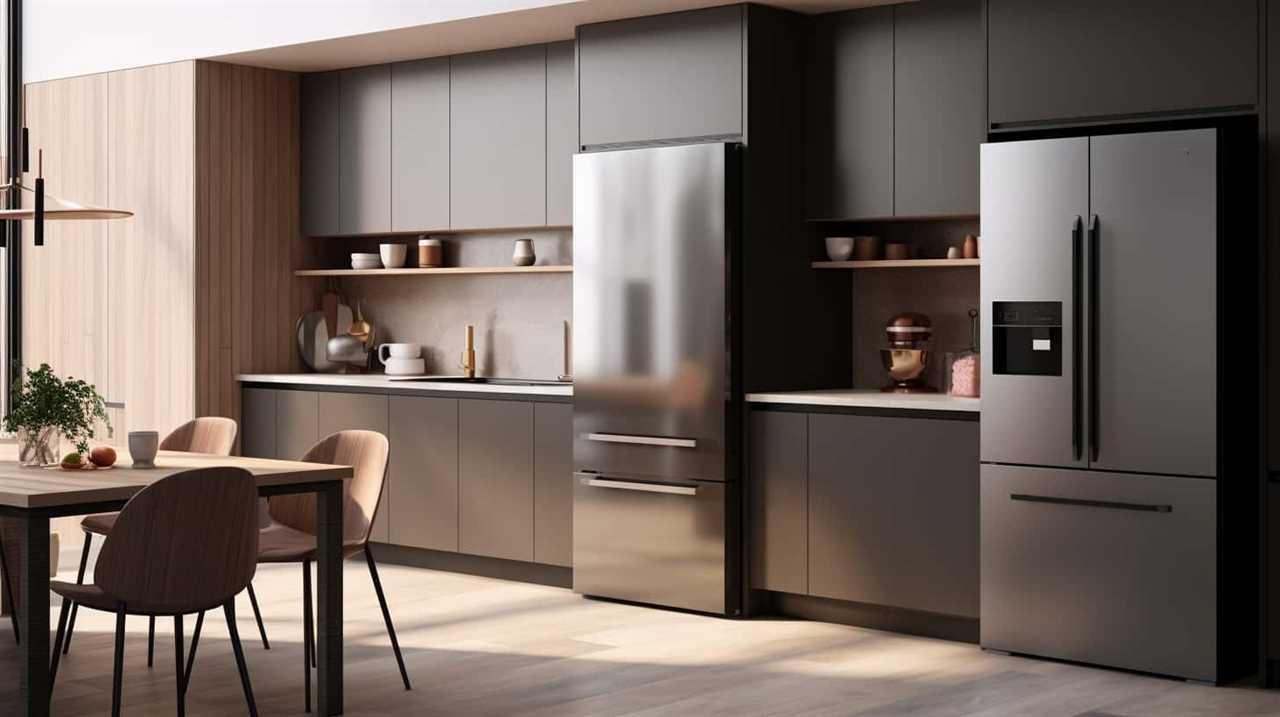
To combat this issue, smart power strips can be utilized. These power strips are designed to automatically cut off power to devices when they are not being actively used, eliminating standby power waste.
Additionally, energy-efficient charging methods can be employed, such as using chargers that automatically stop drawing power once the device is fully charged.
Common Culprits: Appliances That Use Standby Power
Many appliances in households today continue to consume electricity even when they are not actively being used. These appliances are known as standby power vampires and can significantly contribute to unnecessary energy consumption and higher electricity bills. Here are three common culprits that use standby power:
- Televisions: Modern TVs often remain in standby mode to enable features like remote control operation and quick startup. However, this standby power can account for a significant portion of the TV’s total energy consumption.
- Computers: Both desktops and laptops consume standby power when they are plugged in but not in use. This power is used to keep the computer in a state of readiness, allowing for quick startup or remote access.
- Chargers: Chargers for devices such as smartphones, tablets, and laptops continue to draw power from the wall socket even when the device is fully charged or not connected. It is important to unplug chargers when not in use to avoid wasting standby power.
How Standby Power Affects Your Energy Bill
Standby power, also known as phantom power consumption, refers to the electricity used by appliances even when they are not in use but remain plugged in. This hidden energy usage can significantly impact your energy bill over time.

To mitigate this, energy-saving standby options, such as power strips with built-in timers or smart power outlets, can be utilized to automatically cut off power supply to appliances when they are not needed. This helps to reduce unnecessary energy consumption and lower your energy costs.
Phantom Power Consumption
Phantom power consumption, the phenomenon in which appliances consume electricity even when not in use, can significantly impact your energy bill. To better understand this issue, consider the following:
- Standby power can account for up to 10% of your total energy consumption, leading to unnecessary expenses. This wasted energy is often attributed to appliances like televisions, game consoles, and computer peripherals that remain in a low-power mode when not actively used.
- Reducing phantom power can be achieved by unplugging appliances or using power strips with built-in switches to easily cut off power supply. Additionally, utilizing smart power strips that automatically turn off power to devices when not in use can further reduce standby power consumption.
- Opting for energy-efficient appliances can significantly diminish phantom power consumption. Look for products with the Energy Star label, indicating that they meet strict energy efficiency guidelines set by the Environmental Protection Agency.
Energy-Saving Standby Options
To address the impact of standby power on energy bills, it is important to explore energy-saving options for appliances that are not in use. By implementing energy efficient standby options, consumers can significantly reduce standby power consumption and ultimately lower their energy bills.
One option is to use smart power strips, which automatically cut off power to devices that are not in use. These power strips can be programmed to turn off power to specific outlets after a certain period of inactivity, ensuring that no energy is wasted.

Another option is to enable power management features on appliances that have them. Many modern devices, such as computers and televisions, have power-saving modes that can be activated when they are not being used. These modes reduce power consumption without affecting the functionality of the device.
Lastly, unplugging appliances when they are not in use is a simple but effective way to eliminate standby power consumption. This may require some inconvenience, but it can lead to significant energy savings in the long run.
Energy-Saving Tips for Your TV and Entertainment Devices
How can you minimize energy consumption while using your TV and entertainment devices? Here are three tips to help you reduce your energy usage and save money:
- Choose energy-efficient gaming consoles: When purchasing a gaming console, opt for models that have earned the ENERGY STAR label. These consoles are designed to consume less power during gameplay and in standby mode, helping you save energy and reduce your carbon footprint.
- Reduce power consumption of sound systems: Sound systems can be a significant source of energy consumption. To minimize power usage, consider using soundbars or smaller speakers instead of large, energy-hungry surround sound systems. Additionally, remember to turn off or put your sound system on standby when not in use.
- Adjust brightness and display settings: TVs often come with pre-set brightness and display settings that are more energy-intensive. By adjusting these settings to more energy-efficient levels, such as reducing brightness and disabling unnecessary features, you can significantly reduce power consumption while still enjoying a high-quality viewing experience.
By following these energy-saving tips, you can minimize energy consumption and contribute to a greener and more sustainable future.
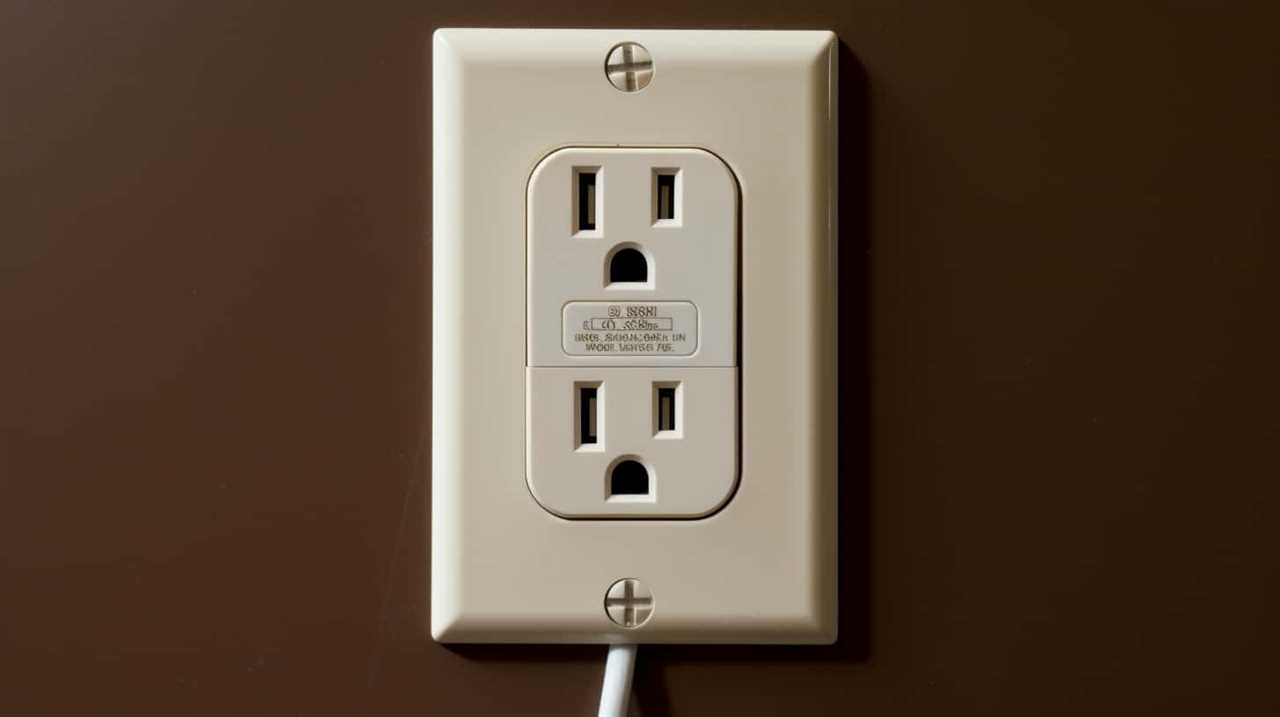
Now, let’s move on to the next section about reducing standby power in the kitchen.
Reducing Standby Power in the Kitchen
To continue our conversation on minimizing energy consumption, let’s now focus on reducing standby power in the kitchen.
The kitchen is a hub of activity in most households, and it is important to be mindful of reducing kitchen energy waste and minimizing idle power usage. By adopting smart strategies, we can make our kitchens more energy-efficient and sustainable.
One effective way to reduce standby power in the kitchen is to unplug appliances when they are not in use. Many kitchen appliances, such as toasters, coffee makers, and blenders, continue to draw power even when they are turned off. By unplugging these appliances or using power strips with on/off switches, we can eliminate standby power consumption.

Furthermore, choosing energy-efficient appliances is crucial in reducing kitchen energy waste. Look for appliances with the Energy Star label, as they are designed to use less energy while still delivering high performance. Additionally, properly maintaining and cleaning appliances can improve their efficiency and reduce idle power usage.
By implementing these measures, we can significantly reduce energy waste in the kitchen and contribute to a more sustainable lifestyle.
Now, let’s shift our focus to smart strategies for minimizing standby power in the bedroom.
Smart Strategies for Minimizing Standby Power in the Bedroom
One effective approach for reducing standby power in the bedroom is implementing smart automation systems. These systems allow for the efficient management of energy usage and help homeowners save money on their electricity bills.
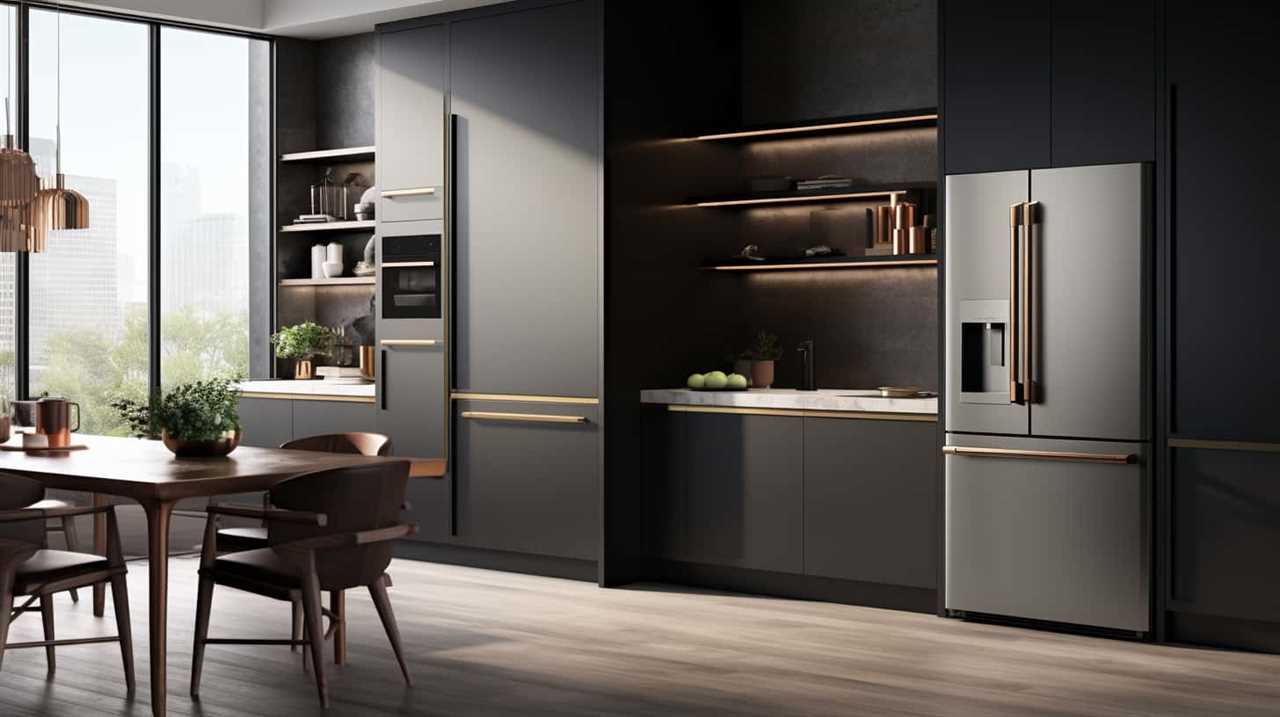
Here are three energy-saving strategies using smart home automation:
- Smart Plugs: By connecting devices such as lamps, chargers, and fans to smart plugs, you can control their power usage remotely. Smart plugs also provide the option to schedule when devices turn on and off, ensuring they are not left on standby unnecessarily.
- Motion Sensors: Installing motion sensors in the bedroom can automatically turn off lights and other devices when no one is present. This ensures that power is not wasted when the room is unoccupied.
- Smart Thermostats: These devices can regulate the temperature in the bedroom based on occupancy and user preferences. By adjusting the temperature when the room is empty or during sleeping hours, smart thermostats can significantly reduce energy consumption.
Standby Power Solutions for Home Office Appliances
To address standby power consumption in home office settings, it is crucial to implement efficient solutions that minimize wasted energy and promote cost savings. Standby power alternatives offer practical ways to reduce energy waste and improve overall energy efficiency.
One effective solution is the use of smart power strips. These power strips are designed to cut off power to peripheral devices when the main device, such as a computer or printer, is turned off. This prevents unnecessary energy consumption by peripherals that are not in use.
Another solution is the use of advanced power management software. This software allows users to schedule automatic shutdowns and power-saving modes for their devices, minimizing standby power usage during periods of inactivity.

Lastly, choosing energy-efficient appliances and equipment, such as ENERGY STAR certified devices, can significantly reduce standby power consumption in the home office.
Taking Control of Standby Power in the Laundry Room
In the laundry room, implementing effective standby power solutions is essential for minimizing energy waste and promoting cost savings. Here are three key strategies to consider for taking control of standby power in the laundry room:
- Invest in energy-efficient appliances: When purchasing new laundry room appliances, opt for models that are ENERGY STAR certified. These appliances are designed to consume less energy while still delivering optimal performance, helping to minimize laundry energy usage.
- Utilize power strips: Connect your laundry room appliances to power strips that can be easily switched off when not in use. This prevents them from drawing standby power, which can account for a significant portion of energy waste.
- Set up a smart power management system: Consider installing a smart power management system that allows you to remotely control and monitor your laundry room appliances. This technology enables you to schedule their usage and detect any inefficiencies, ultimately maximizing laundry room appliance efficiency and reducing energy consumption.
Overall Tips for Minimizing Standby Power Consumption
To minimize standby power consumption, take the following steps.
- Consider using energy-efficient standby options such as smart power strips or timers. These devices can automatically cut power to appliances when they are not in use, reducing standby power consumption significantly.
- Make sure to unplug chargers and other devices that are not actively charging or in use. Many appliances consume standby power even when they are not being used, so unplugging them can help reduce energy waste.
- Consider implementing standby power reduction strategies such as enabling power-saving modes on devices or adjusting their settings to minimize energy consumption.
- Finally, educate yourself and others about the importance of standby power reduction and the potential energy savings that can be achieved through these simple actions.
Frequently Asked Questions
How Can I Measure the Standby Power Consumption of My Appliances?
To measure the standby power consumption of appliances, various methods can be employed, including using a power meter or a smart plug. Monitoring standby power usage is crucial in identifying ways to reduce energy consumption and promote energy efficiency.

Are There Any Specific Appliances That Consume More Standby Power Than Others?
Certain appliances consume more standby power than others. It is important to choose the most energy efficient appliances and implement tips for reducing standby power consumption, such as using power strips and unplugging devices when not in use.
Can Using Power Strips or Surge Protectors Help Reduce Standby Power Consumption?
Using power strips or surge protectors can help reduce standby power consumption by allowing you to easily turn off multiple appliances at once. This power saving tip is especially effective when combined with the use of energy-efficient appliances.
Are There Any Regulations or Standards in Place to Limit Standby Power Usage?
There are regulations and standards in place to limit standby power usage of energy efficient appliances. These regulations aim to reduce the impact of standby power on electricity bills and promote the use of more efficient appliances.
How Can I Tell if an Appliance Is Using Standby Power or if It Is Completely Turned Off?
To determine if an appliance is using standby power or completely turned off, one can look for indicators such as a standby light or continued energy consumption. Reducing standby power consumption can lower energy bills and have a positive impact on the environment.

Conclusion
In conclusion, standby power, also known as vampire energy, can have a significant impact on both the environment and our wallets. By understanding the hidden costs of standby power and identifying common culprits, we can take smart strategies to minimize its consumption.
Whether it’s in the bedroom, home office, or laundry room, taking control of standby power is essential for energy efficiency. By implementing these overall tips, we can reduce our energy bills and contribute to a greener future. Remember, every watt counts.

